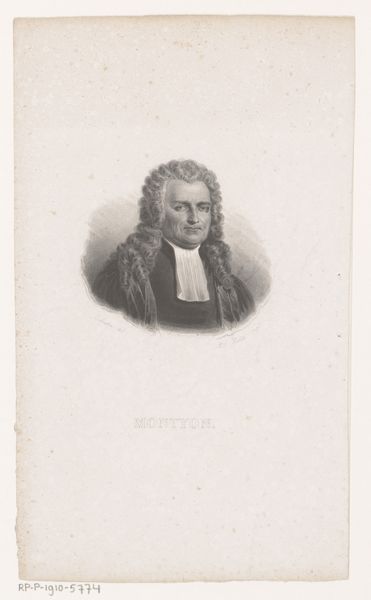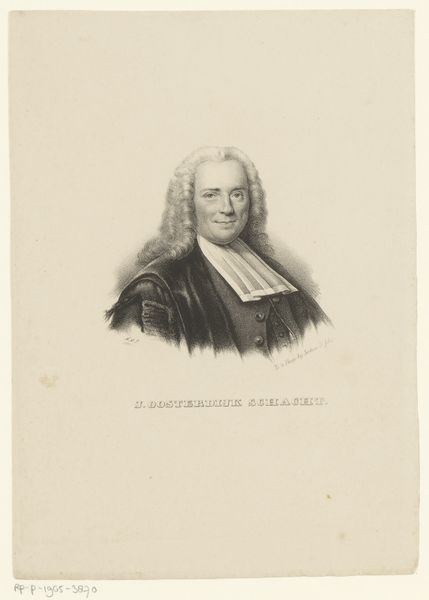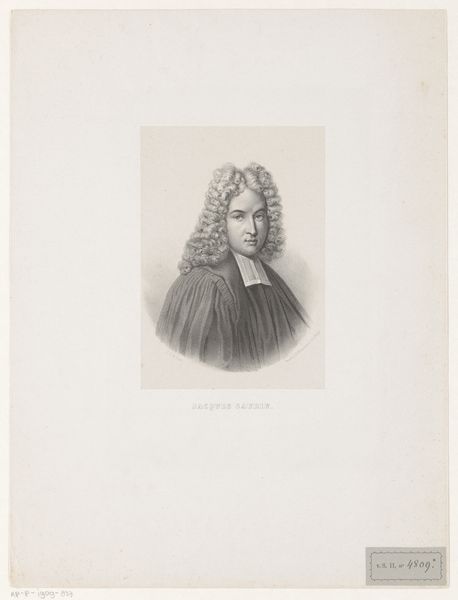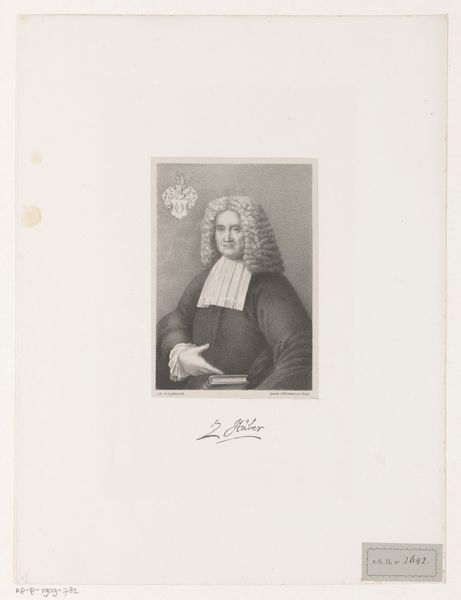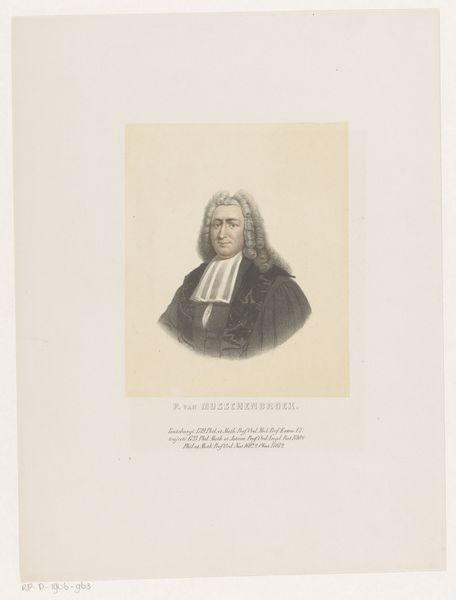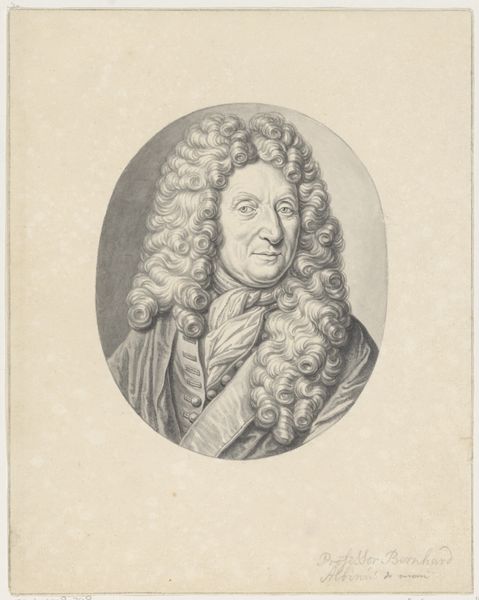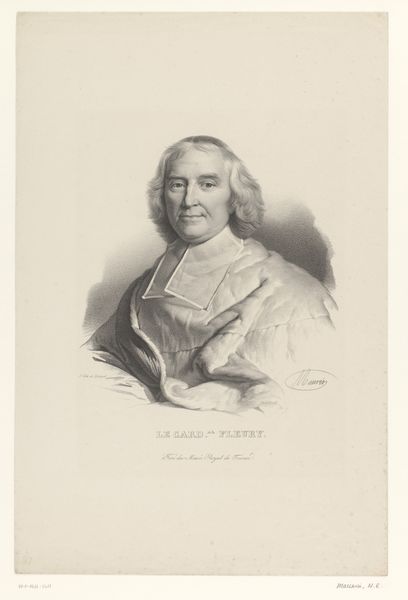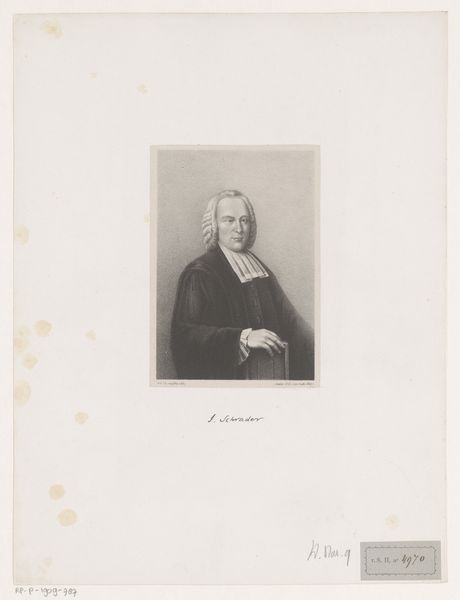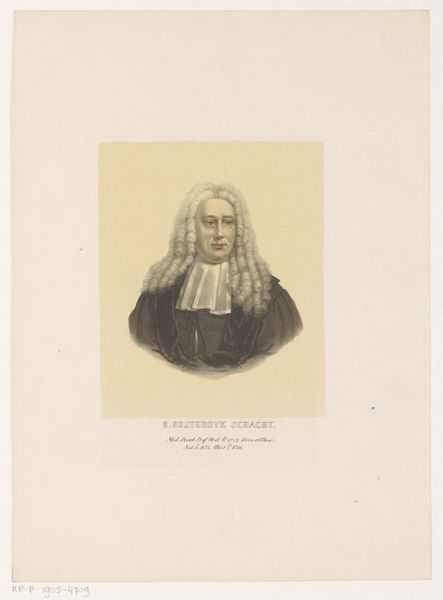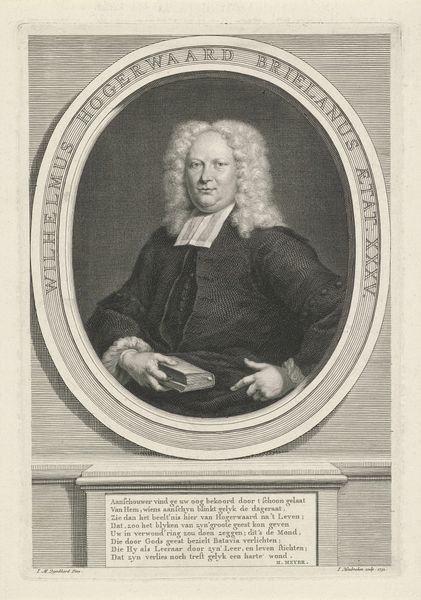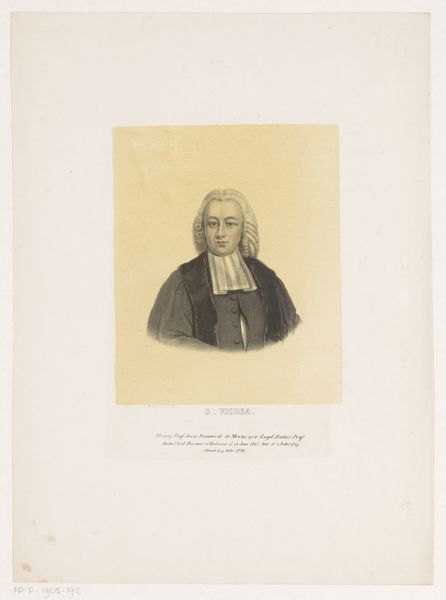
print, engraving
#
portrait
# print
#
old engraving style
#
pencil drawing
#
history-painting
#
academic-art
#
engraving
#
realism
Dimensions: height 220 mm, width 155 mm
Copyright: Rijks Museum: Open Domain
Editor: Here we have N.M. Schild’s "Portret van Petrus van Musschenbroek," an engraving from around 1837-1840. It's interesting how a print can capture so much detail. How do you see this work through the lens of materials and production? Curator: Well, this isn't simply about "capturing detail," but the active making and distribution of knowledge through reproducible means. This engraving’s creation necessitated specialized labor: the artist, the engraver, the printer, and so on. Consider the copper plate—its sourcing, preparation, the engraver's tools—each element embodies specific techniques and social relations of production at the time. How does this engraving’s relative accessibility change its impact compared to a unique painted portrait? Editor: That's a good point. Being a print, it could reach a wider audience. Does that mass production devalue the art itself, or does it democratize it? Curator: It complicates the value, certainly. The image itself is multiplied and distributed. Consider how printmaking workshops functioned. Were they purely commercial, or were they invested in circulating specific ideologies, of class, science or perhaps national identity through representations of important individuals? The materiality of the engraving – the paper, the ink – and its inherent capacity for reproduction situates it firmly within the context of burgeoning industrial capitalism. Editor: So it's less about the artistry of a single creator and more about the industrial processes and the network it represents. Fascinating! Curator: Exactly! By focusing on the means of production, we uncover layers of meaning that are easily overlooked in traditional art historical analysis. The availability and affordability of such images certainly changed consumption habits in Dutch society. Editor: That gives me a lot to think about. It’s interesting to view something like a portrait through a completely different lens. Curator: Indeed. Examining art through its material processes provides a crucial perspective on its social and historical role.
Comments
No comments
Be the first to comment and join the conversation on the ultimate creative platform.

